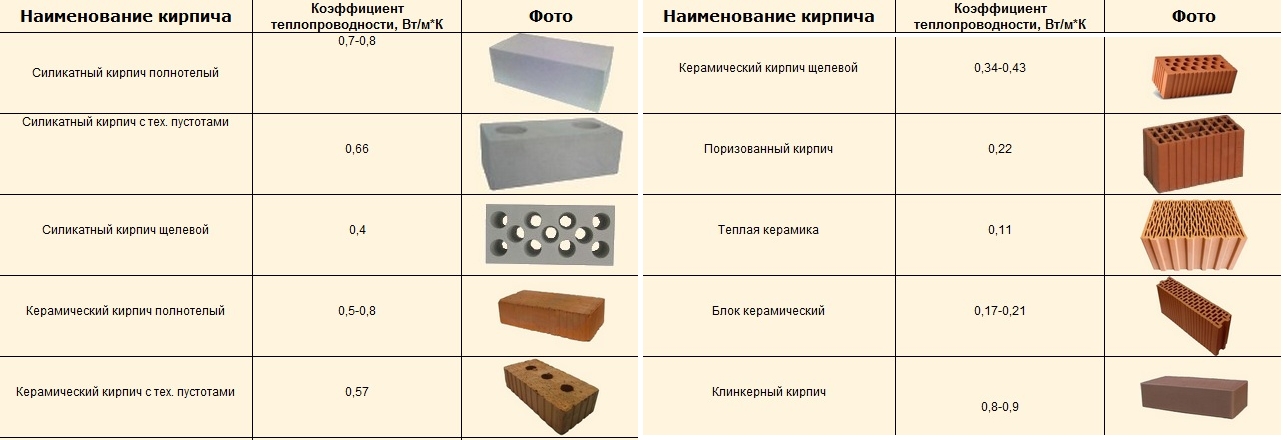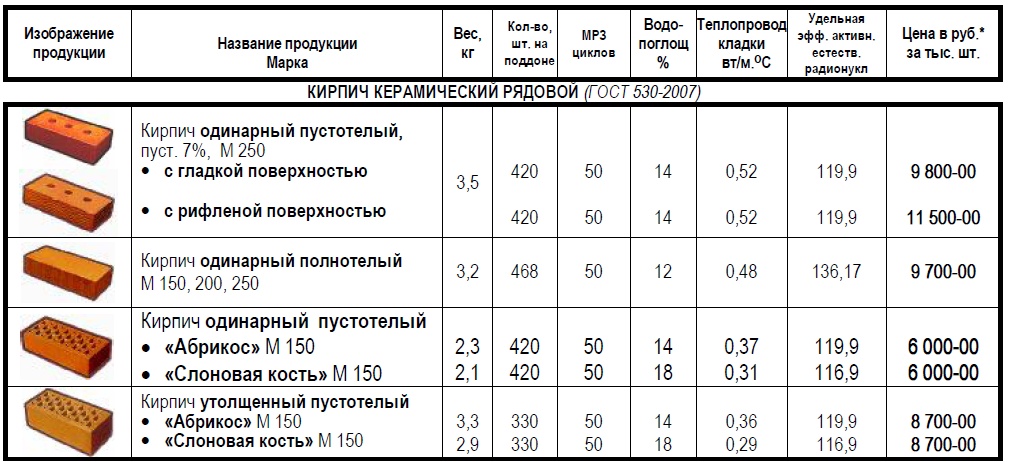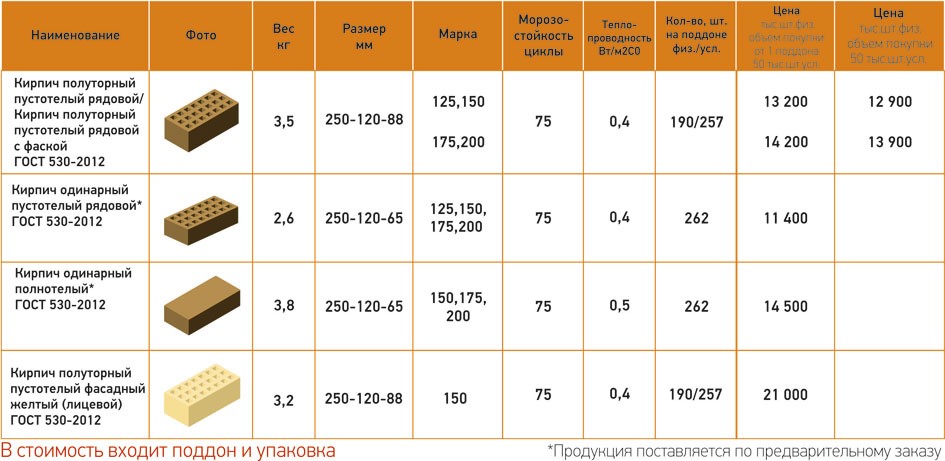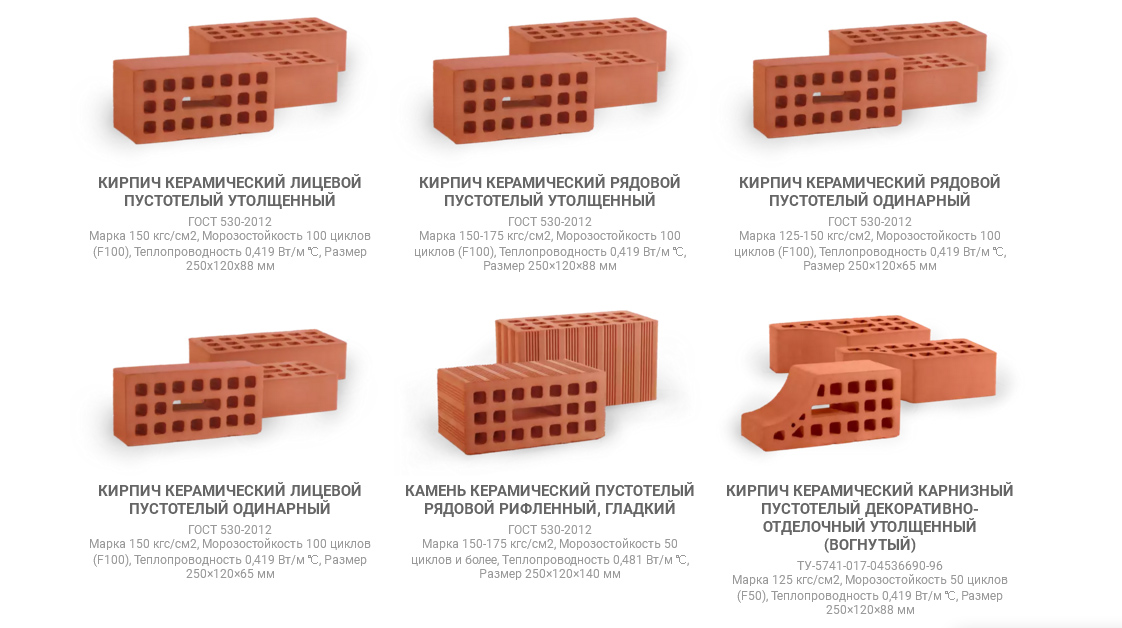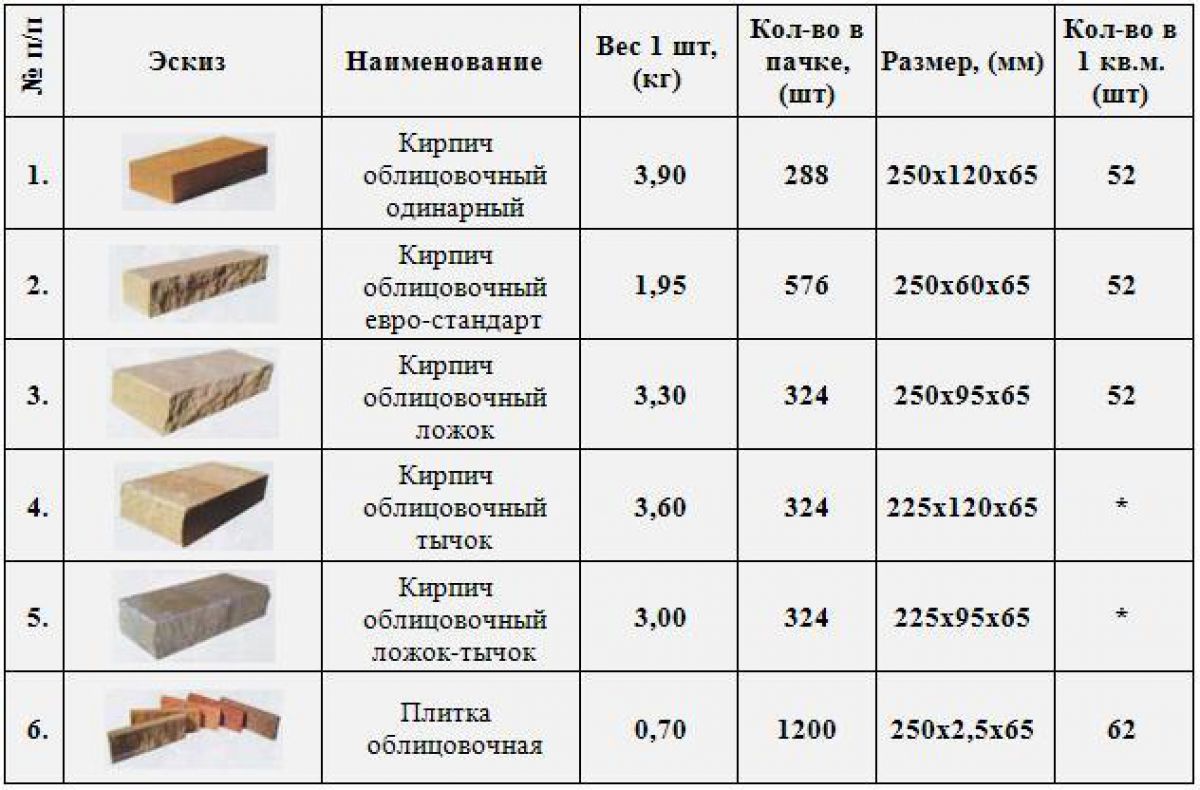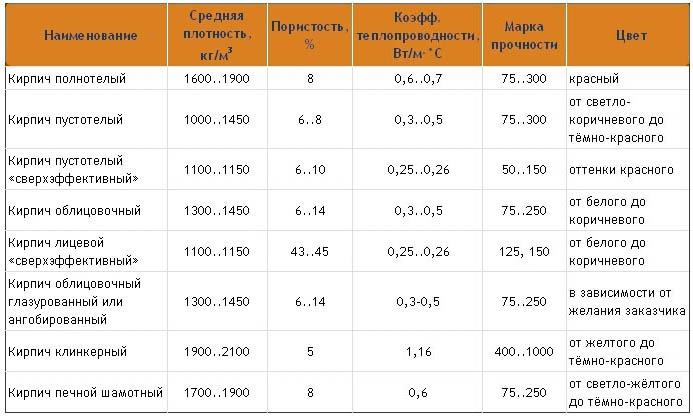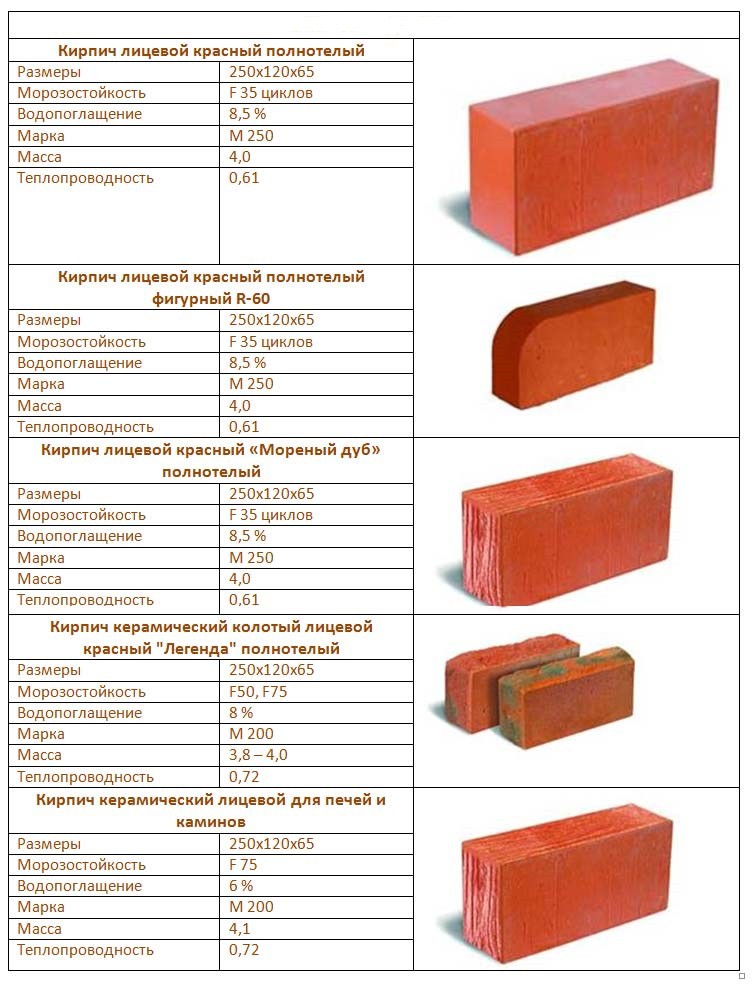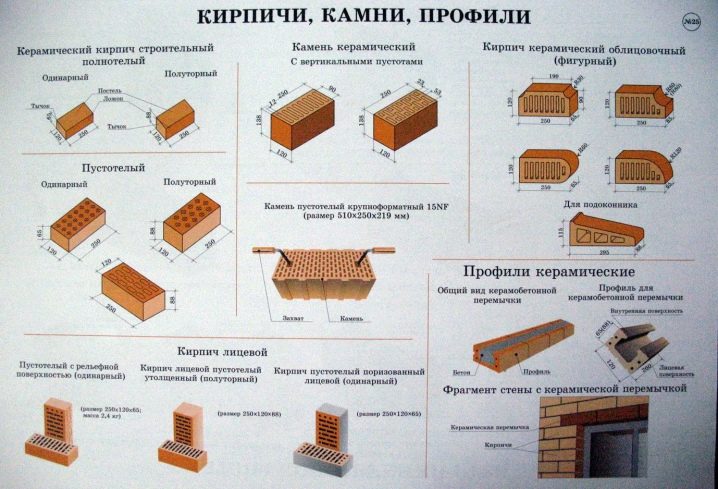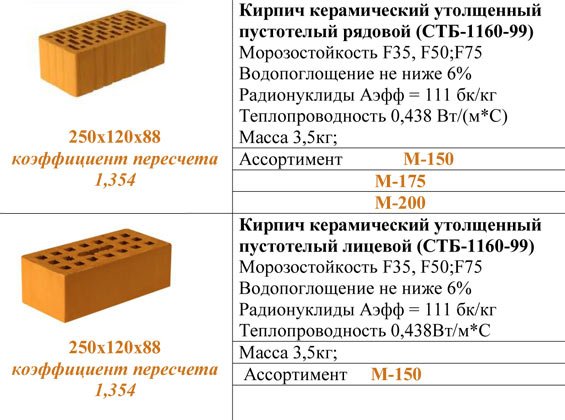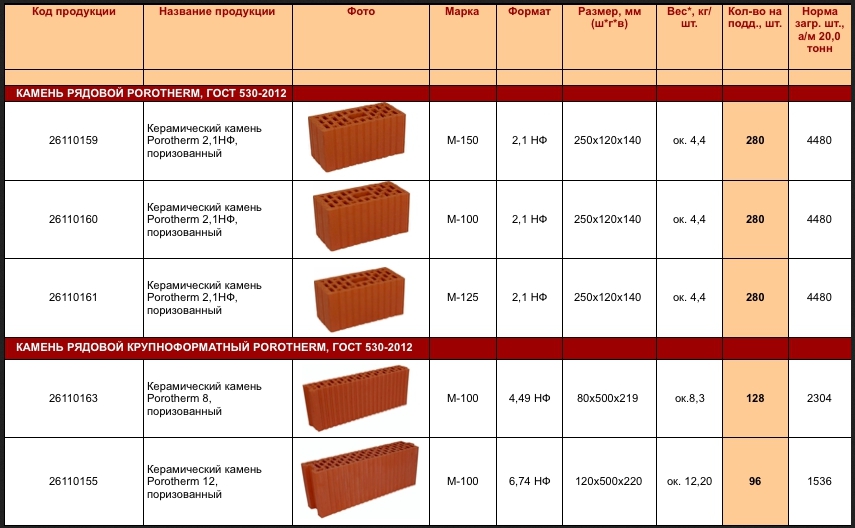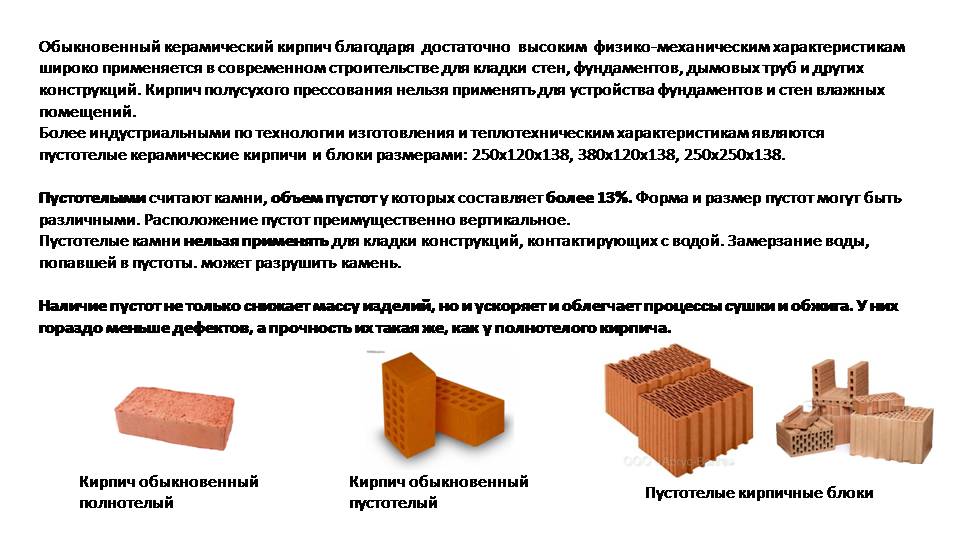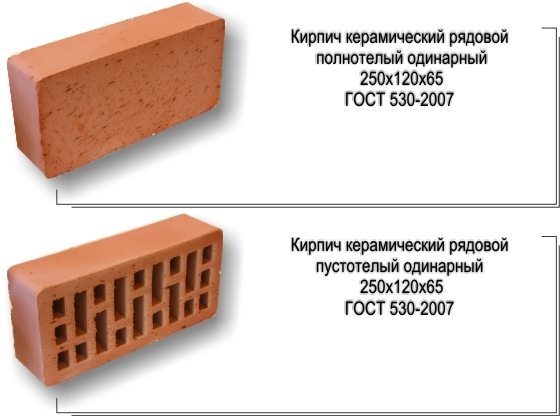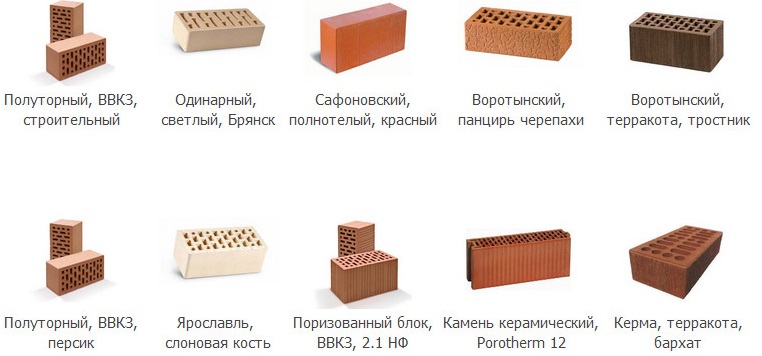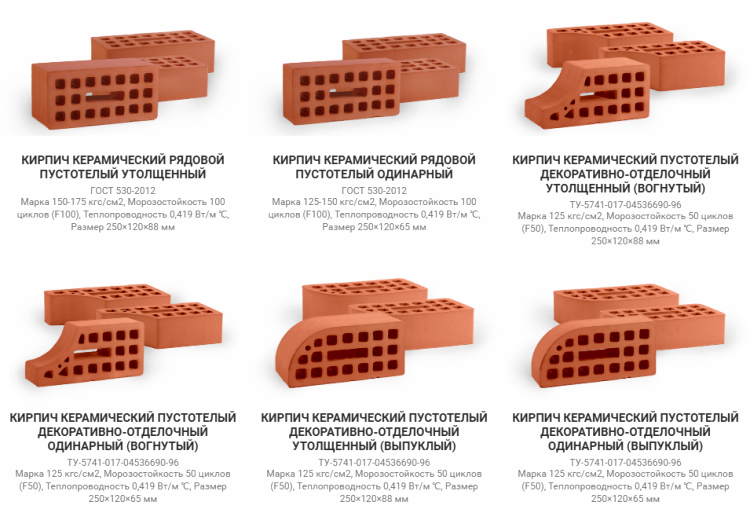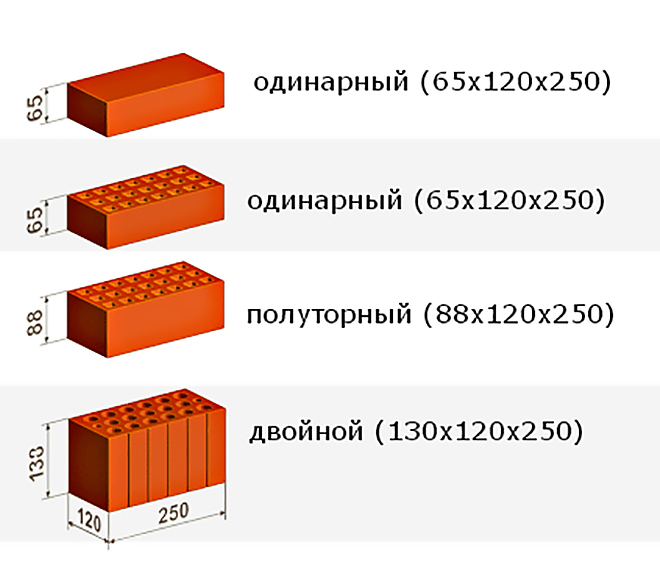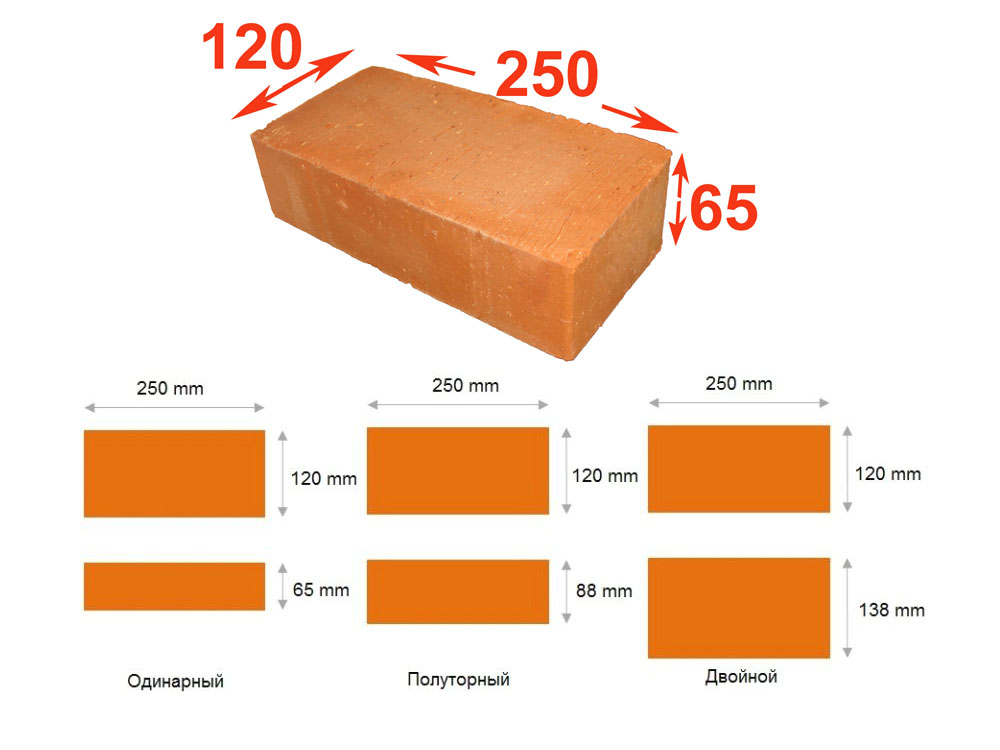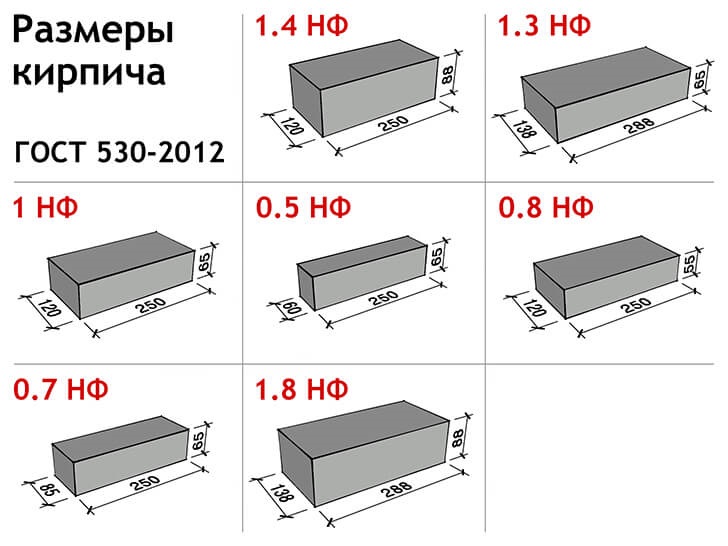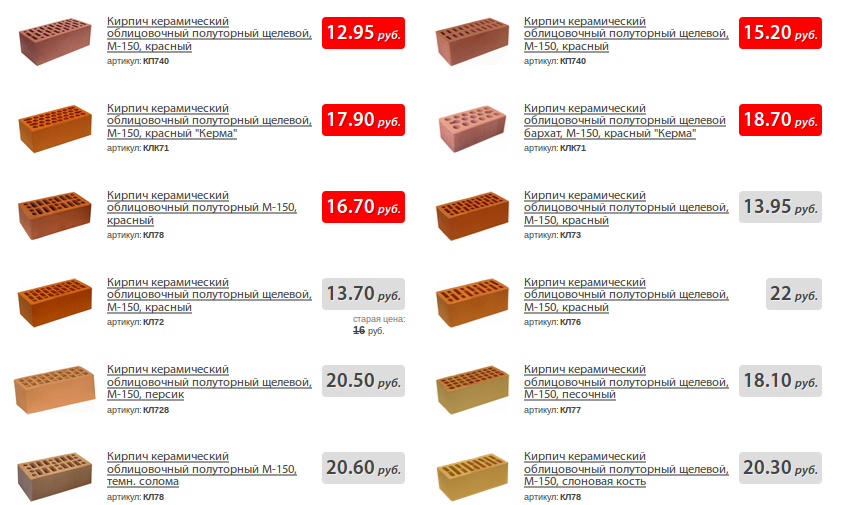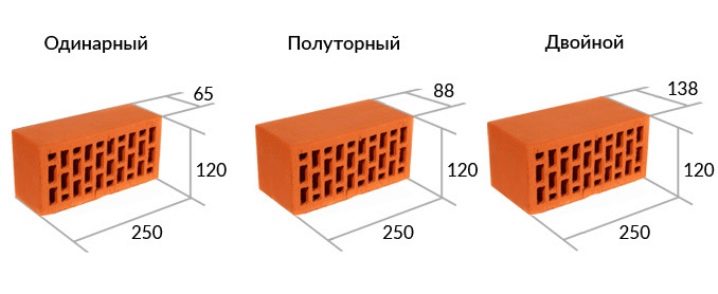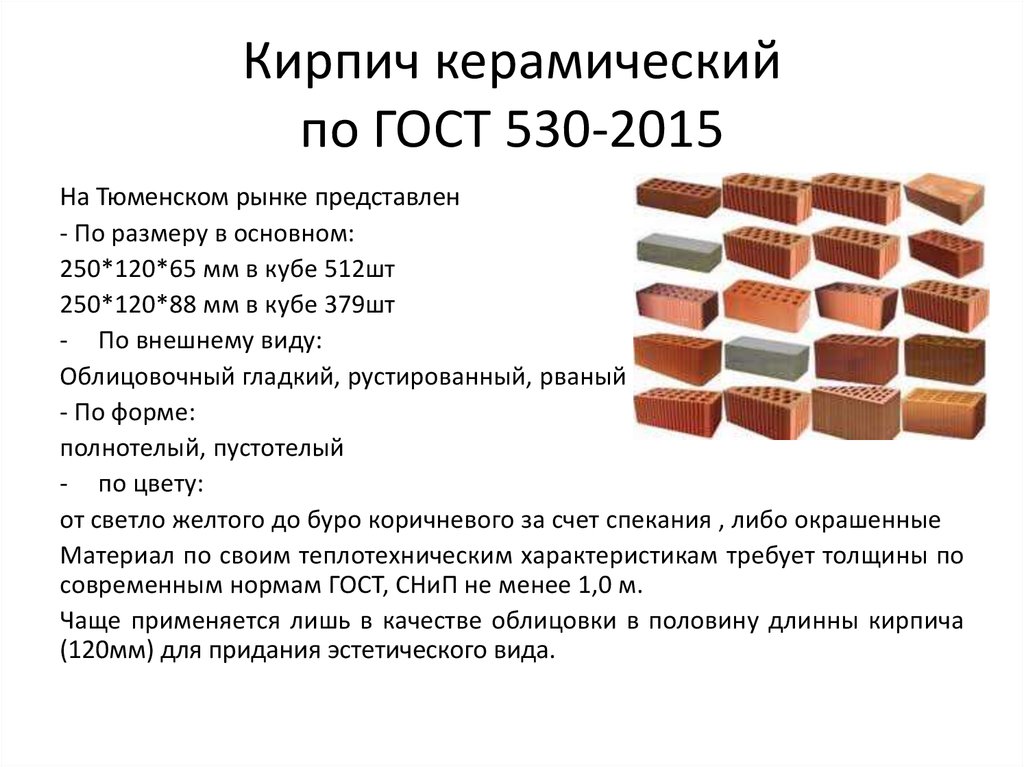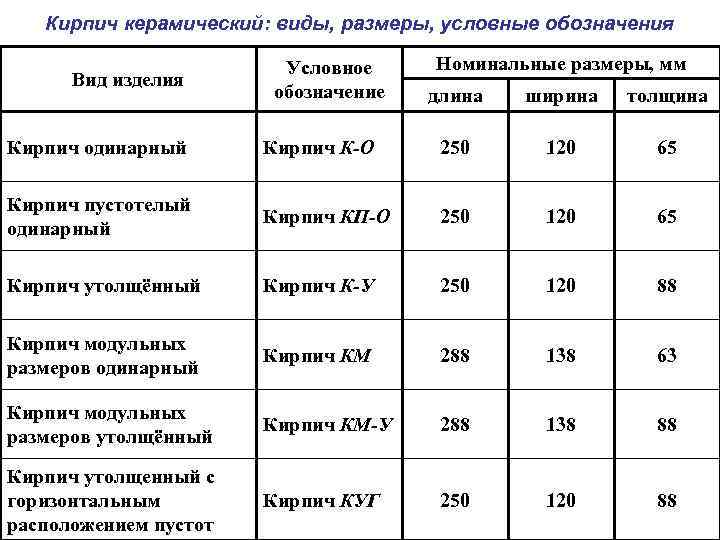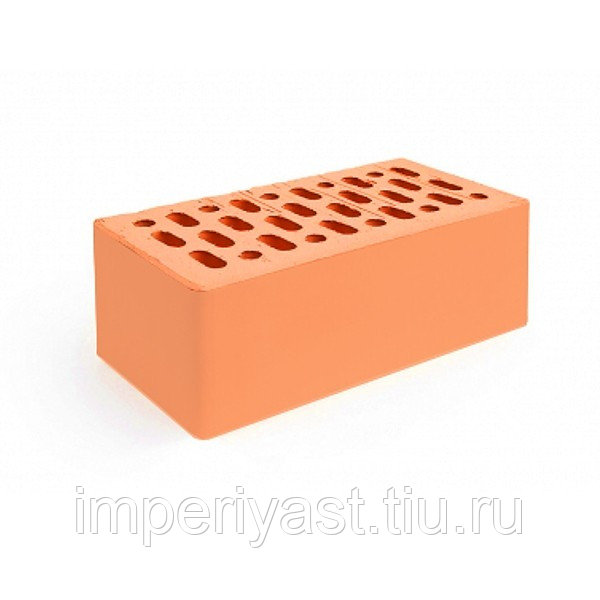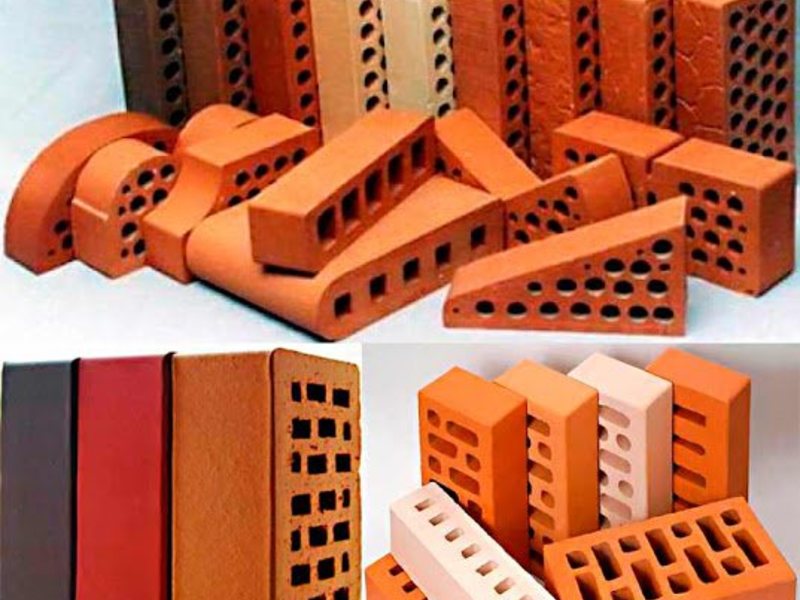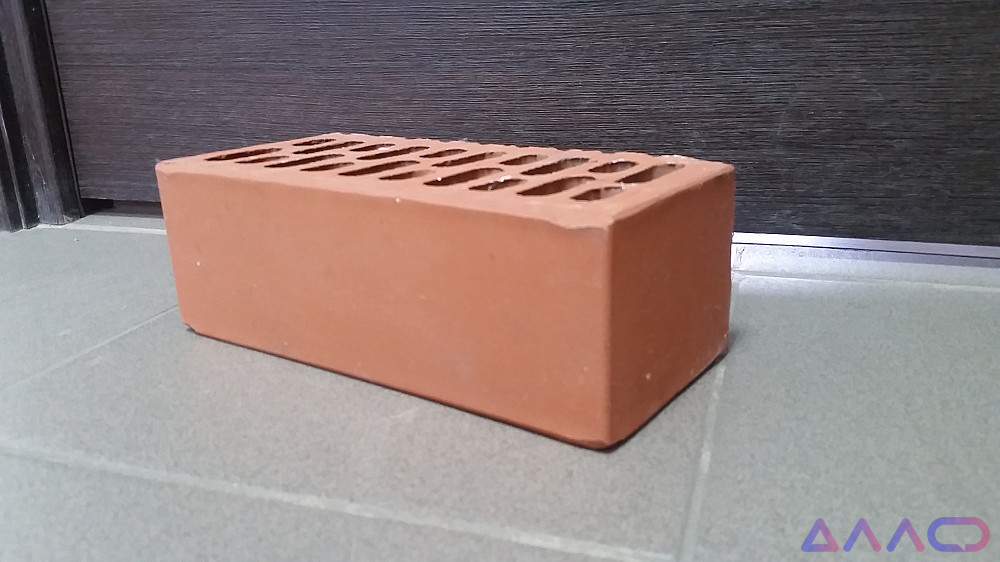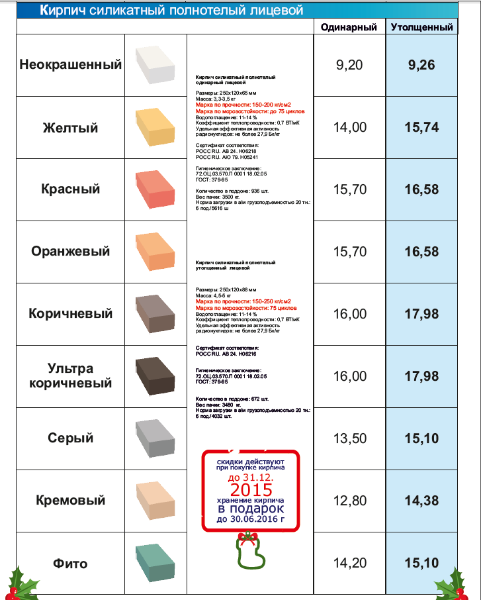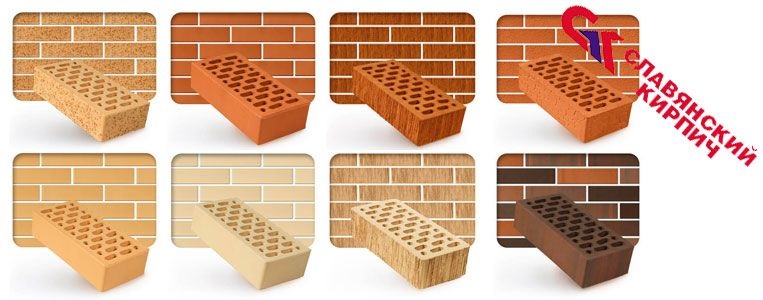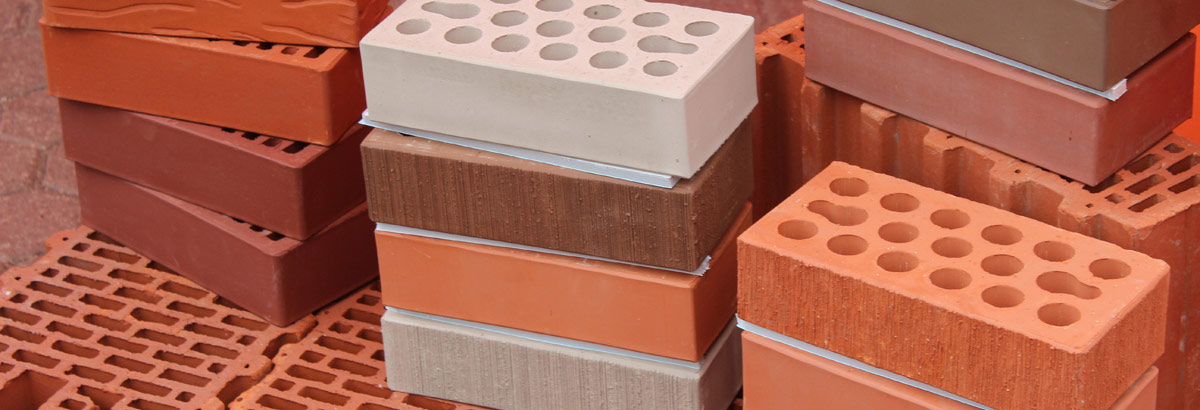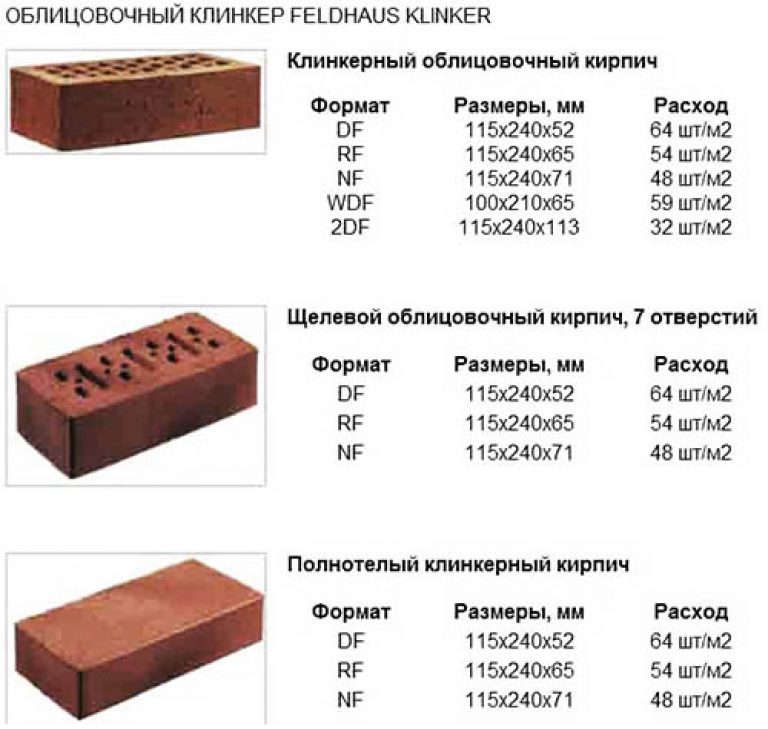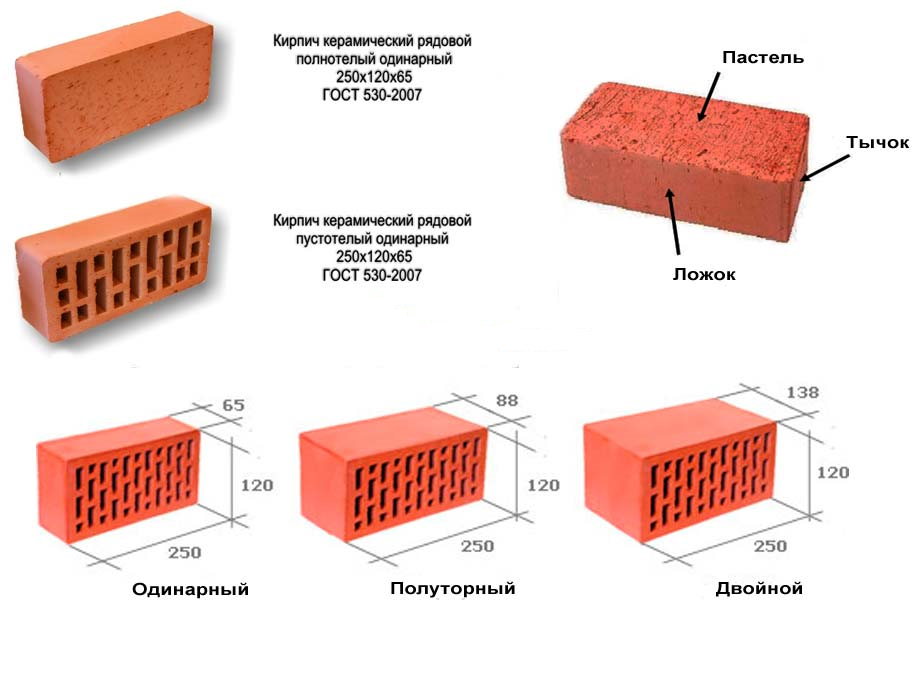What is the most popular brick among manufacturers and developers?
Did you know that the classification of bricks is extremely broad?
It is based on a number of factors that distinguish materials from each other according to certain criteria. So, before considering brick production, let's figure out what products can be produced in the factory.
Varieties of ceramics
Ceramic material is the most common. This is due to its long existence and use, as well as a set of characteristics that meet the basic requirements of construction.
Let's use the table and get acquainted with the varieties that are currently produced by the plants.
Table 1. Types of ceramic bricks:
Depending on the destination
Facial
It is used for cladding buildings, as well as when creating certain structures in the form of fence posts and others.
For such products, special requirements apply, primarily related to the appearance.
Private, photo
Used in the construction of the main masonry. Needs further finishing. Its price is lower.According to the structure
Hollow
Lighter weight, less durable. There can be a different amount of voids.
Corpulent
On the contrary: heavy and durable.Strength grades
M50
It can be used in the construction of structures that will not be subject to loads in the future, since the strength characteristics do not allow this.
M75.100
They can be used in the construction of any walls, in addition to load-bearing ones.
M125
It is used in the construction of load-bearing walls.
M150, M200
The most durable products can be used even in the construction of a basement.The range includes
Profile shaped products
They differ in a non-standard shape. They are used for cladding and creating architectural forms.According to the firing quality
Zheleznyak
The appearance is not entirely attractive, there are dark spots on the surface, which is caused by burning out. But the technical characteristics are very high. It differs in strength and low hygroscopicity.
Red
The best quality. Appearance - presentable, uniform color, no errors. It is used in almost all areas of construction.
Pale
Has a color with a shade of orange. It is very fragile, high moisture absorption. Sometimes it is used in the middle of the masonry for the above reason.Depending on the composition
Ordinary clay brick
Standard products.
Syrets
Differs in composition: in addition to clay, straw is added. Such products are used in regions with a dry climate, since the brick is afraid of moisture.
DIY manufacturing is available.
Silicate products
For silicate products, the classification is no less broad. They may be:
Regular and privates.
Facial
As in the previous case, the front ones are used for facing, the privates are used for the main laying.
Private
Full-bodied and hollow. The number of voids varies from 3 to 14. They are blind.
11 void
Plain white and colored. During the kneading of the mass, pigments can be added to the mixture in order to obtain colored products.
Pigments
And now a little about the size. Produced by:
- Single brick with dimensions 250 * 120 * 65. He is the most popular among developers.
- One and a half, or thickened. Its size: 250 * 120 * 88.
One and a half
Double, characterized by a size of 250 * 120 * 138.
Double
The mass of a single brick can be from 3 to 4 kg. It depends on the presence of voids, density and porosity of the material.
Fired brick
Its classification is similar to the above products. It can be produced in the form of products:
- Empty and full-bodied;
- Privates and obverse;
- In the form of the correct and curly.
The latter type, in turn, is divided into decorative construction and decorative. In the second case, the relief is formed on one or two faces.
Range
What it is?
Ceramic brick is a building material that is made from red clay by molding and firing. Brick was invented a long time ago, but its production technology and composition have not undergone any significant changes. Previously, the process of making ceramic bricks was complex and time consuming. The clay was thoroughly kneaded, then the blanks of the desired shape were manually formed, they were exposed to dry in the sun, and only after the brick had hardened was it sent for firing in a temporary oven. The production of bricks was carried out especially in the summer period, since it was almost impossible to dry the workpieces in the conditions of low temperatures and high humidity, characteristic of the winter and autumn periods. This continued until the second half of the 19th century, until the first kilns and dryers were invented in Europe.

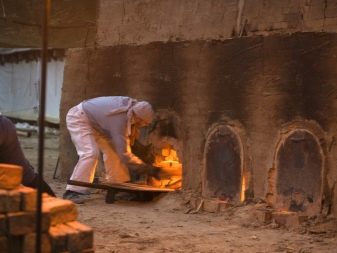
Today, the process of producing ceramic bricks is fully automated and is carried out year-round at numerous enterprises. There are two ways to make the material. The first is called semi-dry pressing and consists in the formation of raw clay from low moisture content. The process takes place under a sufficiently high pressure, which makes it possible to ensure fast setting of the raw material and to obtain a material of high density and hardness at the output. The advantages of this technology are considered to be fast production and simplicity of mechanisms for production. The main disadvantage of the method is the impossibility of using the material for the construction of structures that will be exposed to high humidity. It is because of its low performance that such a brick is used little and the volume of its production is rather low.

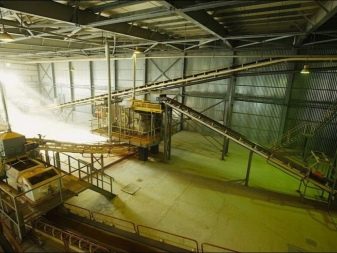
The second method is called plastic molding and consists in extruding clay from a belt press, followed by drying and firing the blanks at a temperature of 1000 degrees. At the same time, the moisture content of the clay reaches 35%, while with semi-dry pressing this figure barely reaches 10%. This method is used to manufacture the bulk of ceramic bricks used in all areas of construction. The advantages of the method include the possibility of producing bricks of different shapes and sizes, which allows the formation of hollow sections in the blanks, changing the operational characteristics of the material. The disadvantages are the high cost of equipment and, in comparison with the first method, a slightly increased time for the production of bricks.

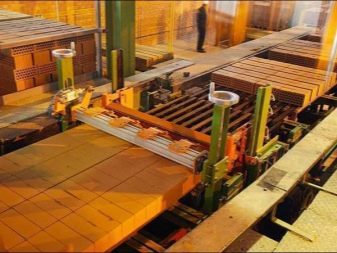
After production, each batch of ceramic bricks is tested. To do this, take several copies and check them for water absorption, compression and impact resistance. The check is carried out on specialized equipment using a multi-ton press. Based on the test results, the products are certified in accordance with the strict requirements of GOST with the assignment of the appropriate frost resistance (F) and strength (M) classes. However, in addition to the letter symbol, the marking of the brick also includes numbers. So, the figure located behind the F symbol indicates how many freeze-thaw cycles a brick can withstand without losing its basic operational characteristics.
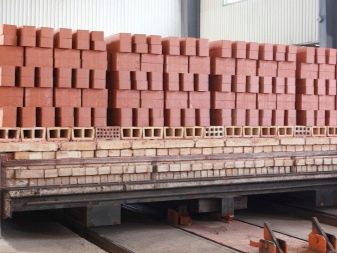
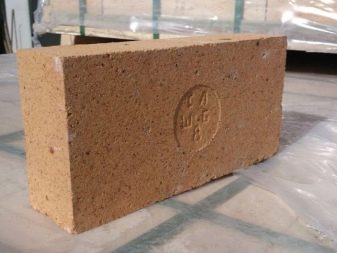
The digital indicator following the “M” icon indicates what the maximum load can be for 1 cm2 of the brick area.Due to the fact that all tests are carried out according to a single standard, certified bricks from different batches may differ only very slightly from each other. This makes it possible to classify items according to the form of execution and size, considering the products belonging to one category or another, conditionally the same. The scope of application of ceramic bricks is quite wide. In addition to construction, the material is successfully used in the construction of fireplaces, fences, columns and stairs, as well as in the restoration of facades and interiors.

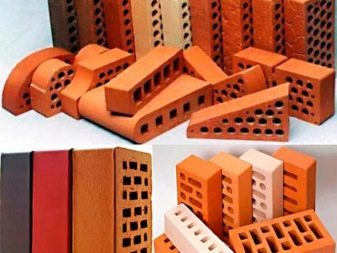
How much does it cost to buy a facing brick: price per piece
In order to understand how much bricks cost, you need to familiarize yourself with the norms that are established by GOST. It is there that it is spelled out what sizes of bricks are standard, and what should be the weight of one brick of one kind or another.

Facing brick reliably protects the foundation and walls of the building from the negative effects of atmospheric phenomena
First of all, it should be noted that both domestic and European standards are equally recognized in the modern market, therefore, when choosing a suitable material, you need to pay attention to this. Due to such double standards, all material is additionally divided into 2 more categories:
- NF - normal size - 240x115x71 mm;
- DF - thinner - 240x115x52 mm.
The second option is more consistent with the architectural classics, but when choosing and buying material, it is imperative to ensure that all elements are of the same standard. Otherwise, in the process of facing, you will have to face a lot of difficulties.
Considering the existing types of material, the cost of facing bricks was briefly considered. But it will still be useful to once again compare how much a facing brick of one type or another costs in order to come to a conclusion about the advisability of one or another choice.

Clinker cladding brick with ombre effect
So, a scene of one hollow ceramic brick at standard sizes will be from 12 to 20 rubles. But the price of a one-and-a-half facing brick, the size of which is 250x120x88 mm, will be slightly higher - from 20 to 28 rubles.
Clinker bricks are more expensive than ceramic bricks. For example, with the parameters of the product 250x85x65 mm, at least 29 rubles will have to be paid for one piece, and this is taking into account the fact that its surface will be smooth. Bricks with an applied textured pattern are even more expensive - from 34 rubles.
Approximately the same brick price per piece for hyper-pressed material. The lower limit of the cost is 23 rubles, and for textured elements - 25-30 rubles per unit.

Types of facing brick masonry
Almost as available as ceramic colored silicate bricks. Its cost, provided a smooth surface is 15 rubles per unit, and if the texture is textured, the price increases markedly - 24-26 rubles.
The cost of a brick is highly dependent on its size, strength, and frost resistance. But there are other factors, for example, a product from a foreign manufacturer will cost much more than a domestic one. So it is worth considering in advance whether you are ready to overpay for the name of the company or prefer the simpler and cheaper option.
Interesting! You can find goods at such low prices only among offers from domestic manufacturers. The prices of foreign companies are usually much higher, and the cost of some elite bricks can reach 100-130 rubles per piece.

An example of a successful combination of using facing bricks and natural stone for finishing the facade of a building
Hollow brick
In accordance with its name, the main difference between this brick is the presence of internal voids - holes or slots, which can have different shapes (round, square, rectangular and oval), volume (13-50% of the internal volume) and orientation (vertical and horizontal). The presence of voids makes this brick less durable, lighter and warmer, less raw materials are used for its manufacture.Hollow bricks are used for laying lightweight external walls, partitions, filling the frames of high-rise and multi-storey buildings and other unloaded structures.
The second, newest, way to ensure the lightness and warmth of the brick is porization. The presence of a greater number of small pores in the brick is achieved by adding combustible inclusions to the clay mass during its molding - peat, finely chopped straw, sawdust or coal, from which only small voids remain in the massif after firing. Often the brick obtained in this way is called lightweight or ultra-efficient. Aerated bricks provide better heat and sound insulation compared to slot bricks.
Technical characteristics of ordinary hollow bricks: density 1000-1450 kg / m³, porosity 6-8%, frost resistance 6-8%, frost resistance 15-50 cycles, thermal conductivity coefficient 0.3-0.5 W / m ° C, strength grade 75 –250, color from light brown to dark red.
Technical characteristics of hollow super-efficient bricks (NPO Keramika): density 1100-1150 kg / m³, porosity 6-10%, frost resistance 15-50 cycles, thermal conductivity coefficient 0.25-0.26 W / m ° C, strength grade 50 –150, the color of shades of red.
Examples of hollow and porous bricks produced by the Lenstroykeramika factories and the Keramika plant:
Hollow building brick, voidness 22% |
|
Size (mm): 250x120x65 Weight (kg): 3.4 Density (kg / m³): 1700 Brand: M175, M200, M250 Frost resistance: F35, F50 Water absorption (%): 6 Thermal conductivity (W / m ° C), |
|
It is used in building structures with increased requirements for strength and reliability. Recommended for the construction of high-rise brick buildings. |
Hollow building brick, voidness 40% |
|
Size (mm): 250x120x65 Weight (kg): 2.3 Density (kg / m³): 1120-1190 Brand: M125, M150, M175 Frost resistance: F35, F 50 Water absorption: (%) 6 Thermal conductivity (W / m ° C) at 0% humidity: 0.24 (on light solution) |
| Used for the construction of internal and external walls. |
Hollow building brick, voidness 42–45%. |
|
Size (mm): 250x120x65 Weight (kg): 2.2-2.5 Density (kg / m³): 1100-1150 Brand: M 125, M 150 (M 175 on request) Frost resistance: F35 Water absorption (%): 6-8 Thermal conductivity (W / m ° C) |
| It is used for the construction of external and internal walls of buildings and structures. It features five rows of voids, which reduces the consumption of masonry mortar by 20%. |
Porous building stone 2NF |
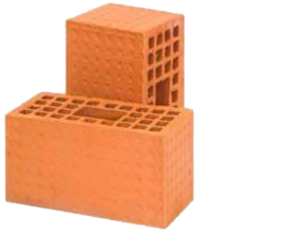
Size (mm): 250x120x138 Weight (kg): 3.7-3.9 Density (kg / m³): 890-940 Brand: M 125, M 150 (M 175 on request) Frost resistance: F35 Water absorption (%): 6.5-9 Thermal conductivity (W / m ° C) |
| Advantages: excellent thermal insulation properties, soundproofing, less weight. It is used in the construction of external and internal walls, significantly increasing the heat-shielding properties of the house. Exterior walls made of porous stone are erected faster than walls made of ordinary hollow bricks, and the number of mortar joints is reduced. Its density is 30% less, it is lighter, which leads to a decrease in the loads on the foundation structure. With a smaller wall thickness of 640 mm, porous ceramic gives the same thermal insulation effect as a conventional brick wall of 770 mm. |
Silicate brick manufacturers
LLC "Kazan plant of silicate materials"
The largest domestic production, producing sand-lime bricks on German equipment. Thanks to the improvement of technology, it was possible to achieve a comprehensive improvement in the performance of silicate bricks. Products are distinguished by precise geometry and clear edges. We produce solid and hollow silicate bricks, single and thickened, as well as three-dimensional colored and rusticated bricks with a relief surface.
JSC "Yaroslavl silicate brick plant"
The plant has existed since 1931, produces 40 types of products, only silicate bricks produces more than 100 million pieces per year
Great attention is paid to the modernization of technical equipment, and the quality of the produced silicate bricks is checked by the factory laboratory. The range of products includes single and thick bricks, hollow and solid bricks, facing and ordinary bricks.
Lipetsk Silicate Plant LLC
The enterprise has been operating since 1938, today it is one of the largest in the field of sand-lime brick production, and is one of the hundred best enterprises in the country's construction sector. Since 2015, the plant has been using German equipment for the production of sand-lime bricks, annually more than 130 million pieces of conventional bricks are produced here. The production of single and thickened building bricks, hollow and solid, has been mastered; not so long ago, colored silicate bricks appeared in the range.
CJSC "Kovrovskiy silicate brick plant"
The company's products are in demand both in the Vladimir region, where they are produced, and in other regions of the country.
The plant pays great attention to checking the quality of products and constantly expanding the range of silicate bricks. At the moment, solid and hollow bricks are produced, painted and unpainted, as well as rusticated bricks, the color range is constantly replenished with new shades
CJSC "Voronezh Combine of Building Materials"
The plant has been operating for over 60 years, during this time it has been repeatedly reconstructed and re-equipped with more modern equipment. The modernization process is ongoing here, which makes it possible to increase production volumes, which at the moment have reached 144 million conventional bricks per year. Although the range of products is expanding, silicate bricks remain the basis. Here they produce ordinary and front bricks, painted in several different shades, as well as painted chipped bricks, several different types of splitting are used.
LLC Mikhailovsky Silicate Brick Plant
The enterprise is located in the Volgograd region, the production capacity allows to produce up to 120 million pieces of conventional bricks per year. The factory strictly controls the quality of manufactured products. At the moment, the company produces hollow and solid bricks, smooth and chipped, white and colored bricks. For coloring products, a German pigment is used, which does not fade for at least 25 years of operation.
CJSC "Borsky silicate plant"
This enterprise has 80 years of successful work behind it, is equipped with modern production equipment, and all products undergo strict quality control before they go to the buyer. More than 100 million units of conventional bricks are produced here annually, the range is constantly expanding. The enterprise has its own laboratory. The geography of product sales includes 15 regions of Russia. The silicate brick is produced single and one-and-a-half, solid and hollow, as well as painted and embossed bricks.
JSC "Cherepovets silicate brick plant"
Since the founding of the plant in 1972, it has been considered one of the largest manufacturers of sand-lime bricks in the North-West and in Russia in general. The design capacity allows the production of 100 million units of conventional bricks per year. The range of manufactured products includes solid and three-hollow silicate bricks, ordinary and front, single and one-and-a-half. Since 1998, the production has been producing three-dimensional colored bricks, since then the color gamut has been constantly expanding, and recently a silicate brick with a rusticated surface has appeared.
CJSC "Silicatechik"
The plant is located in the Ulyanovsk region, has been operating for over 60 years, specializing in the production of silicate bricks, which is produced here in the amount of 104 million units of conventional bricks per year. The assortment is not as wide as that of competitors, but the quality is always at its best. The enterprise produces ordinary and front sand-lime bricks. Facing bricks are available in several different shades.
Composition, production and varieties of ceramic bricks
The manufacture of this type of building material is a complex process consisting of several stages. Currently, there are two technologies for the production of ceramic bricks.
1. The plastic method involves molding a block from a clay mass with a water content of about 17-30%. To implement this process, a belt press is used, then the brick is dried in a specially equipped chamber or under a canopy. At the last stage, it is fired in a kiln or in tunnels, the cooled products are placed in a warehouse.
2. Technology of semi-dry pressing. At the same time, the initial mass has a moisture content in the range of 8 -10%. The block molding process is carried out by pressing under high pressure up to 15 MPa.
Brick production is carried out in strict accordance with national standards GOST 7484-78 and GOST 530-95. In the process of preparing the mass, clay processing machines, rollers, runners and pug mills are used. Brick molding in modern factories takes place on high-performance belt presses. The homogeneous structure of the blocks and the absence of voids is achieved through the use of vibration stands.
Drying of raw bricks is carried out in a chamber or tunnel way. In the first case, a batch of products is loaded into a specially equipped room, where the temperature and humidity are changed according to a given algorithm. In the second version, trolleys with raw material are sequentially guided through zones with different microclimate parameters.
Firing of bricks takes place in special kilns under certain conditions. The temperature regime is selected depending on the composition of the raw material and its maximum values vary from 950 to 1050 ° C. The firing time is selected so that at the end of the process, the mass fraction of the vitreous phase in the brick structure reaches 8 - 10%. This indicator provides the maximum mechanical strength of the product.
The raw material for the production of bricks is fine clay, which is mined in open pit mines using single-bucket or bucket wheel excavators. It is possible to ensure the proper quality of products only when using a material with a homogeneous composition of minerals. Plants for the production of bricks are being built close to the deposits to reduce transport costs and to securely supply the company with mineral raw materials.
The main types of ceramic bricks differ in purpose and are subdivided into ordinary (other names: building or ordinary) and front.
Ordinary ceramic bricks.
Facing ceramic bricks.
Facial, depending on the technological design, can be of several types:
- front;
- glazed;
- shaped;
- figured;
- engobed.
Ceramic brick, in addition, can be monolithic or hollow, and its spoon and butt surfaces are made smooth or corrugated. In this case, products of the same type often combine several features, so an ordinary block is made full-bodied or with cavities. The laying of stoves or fireplaces is carried out from a special fire-resistant (fireclay) brick, and a special type of brick is used for paving paths - clinker.
Ceramic brick and its structure.
Brick in the construction of modern private houses
A brick cottage at a cost per square meter surpasses buildings from almost all other building materials. But such a house is durable and reliable. And in order to save money, the walls can be made thinner, then simply by insulating them from the outside during the facade cladding.
When purchasing this material, the main attention should be paid to what kind of strength it has. The least durable M50 should only be used for unloaded structures.
M150 and M175 are most suitable for the installation of foundations and plinths. And from M100 it is possible to erect both external walls and internal partitions.
Another important point is the vapor permeability of the masonry. According to this parameter, such housing is inferior only to wooden cottages. Only log houses with their “breathing” walls do this better.But much here depends on the finishing of external structures and the presence of insulation on them.
Many brick houses have successfully stood the test of time, standing for over a century. If you need a dwelling that can be left to descendants, then it is best to make it from a reliable and durable material.
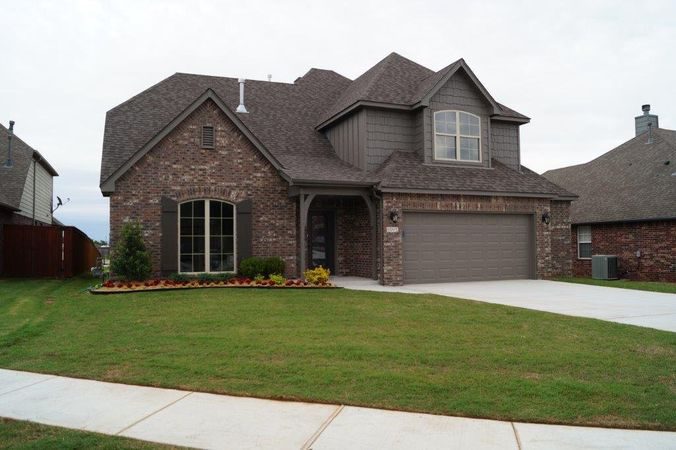
European home

Classic mansion
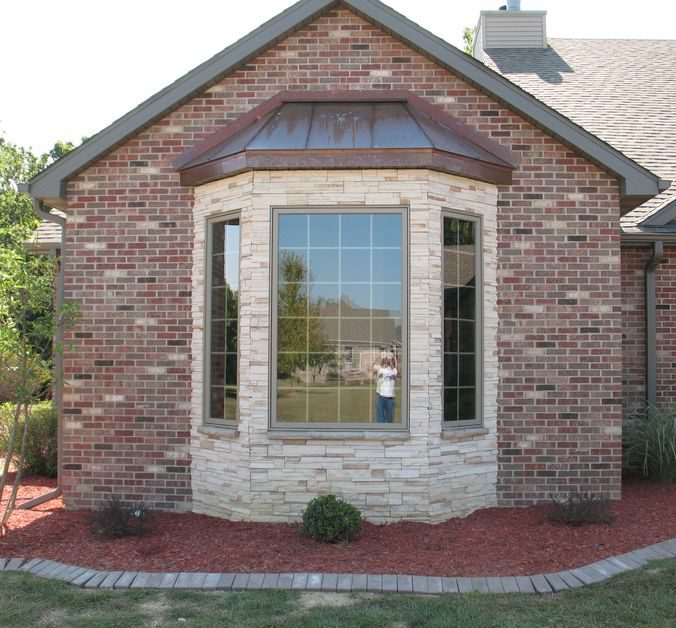
Combination of brickwork and natural stone on the facade
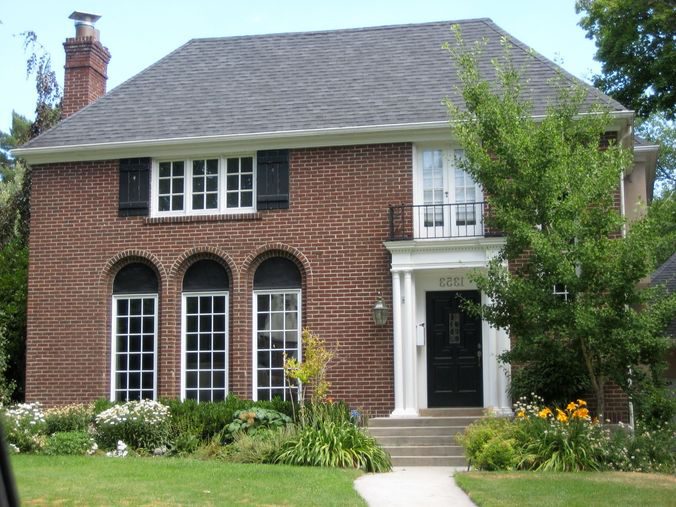
Small house in European style
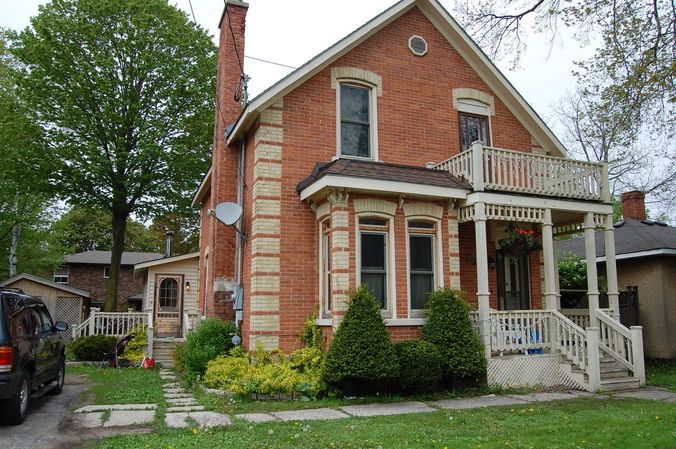
House made of red material - the windows and corners of the house are highlighted in beige
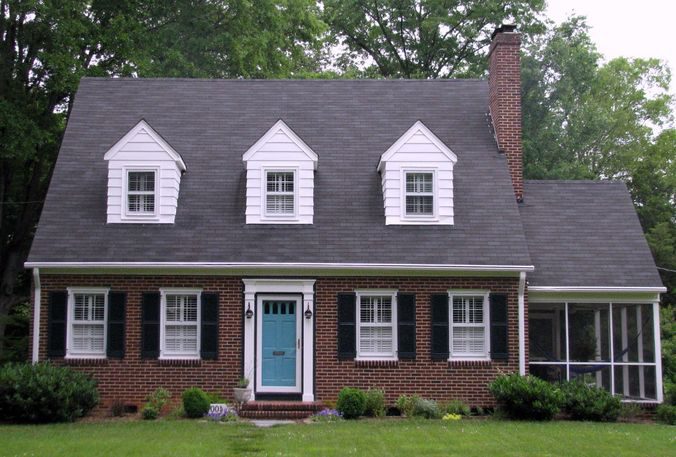
One-storey brick cottage
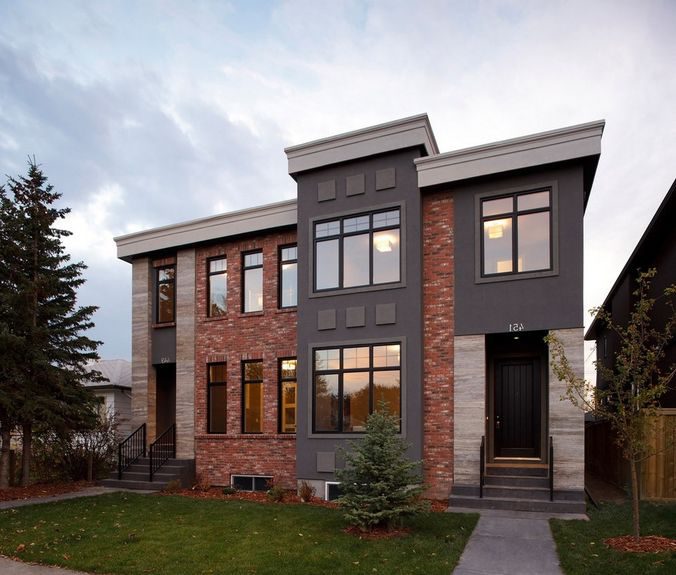
Modern house
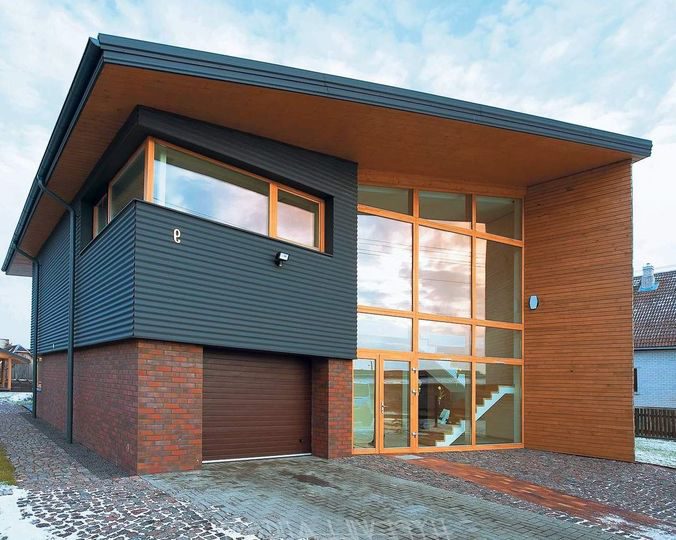
Another version of the Art Nouveau house
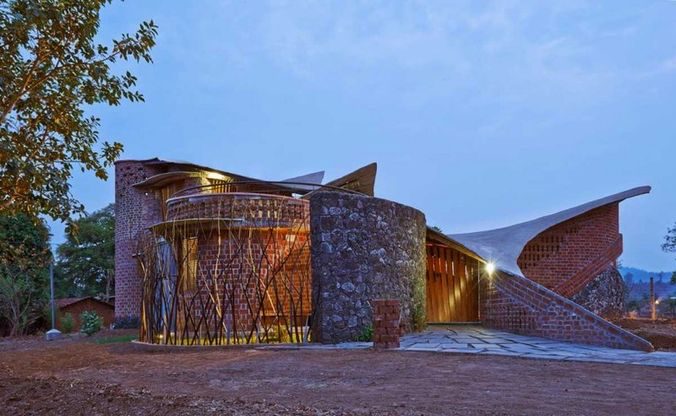
Futuristic brick house design
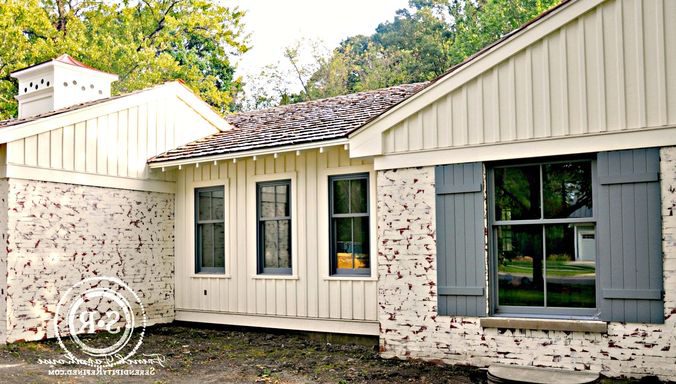
Pay attention to the decoration
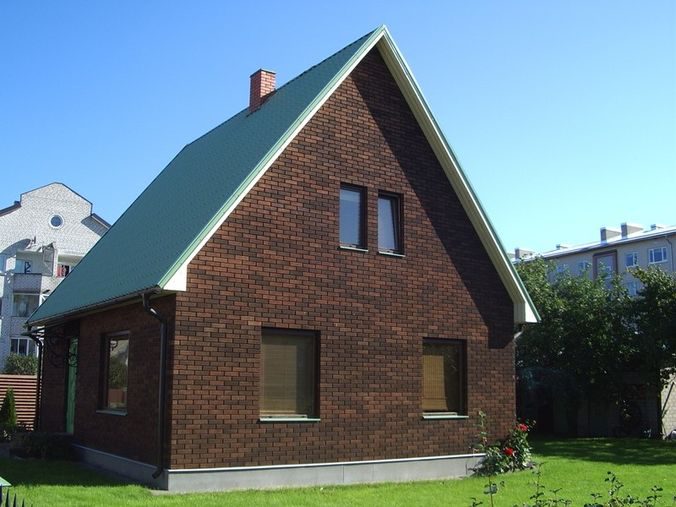
Standard classic house made of dark building material
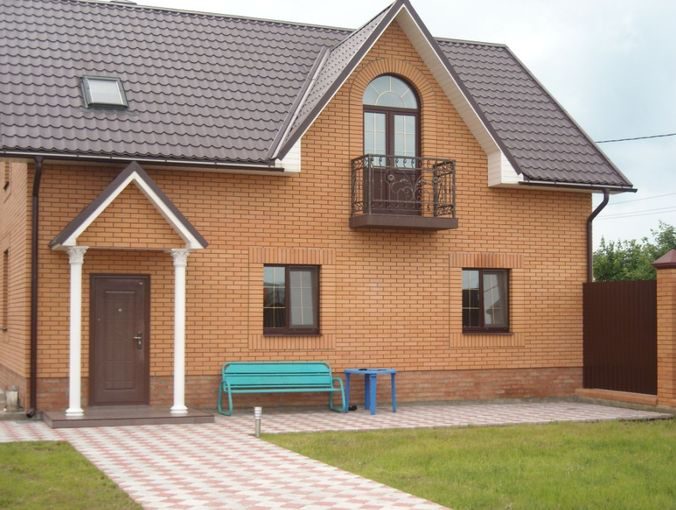
House of yellow
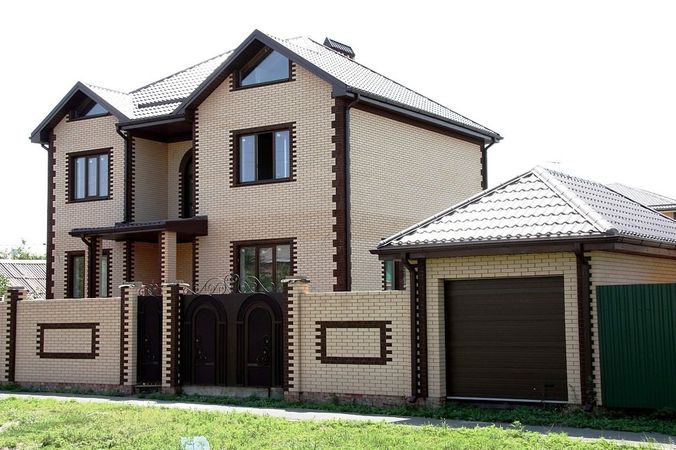
Light brick is combined with dark brown
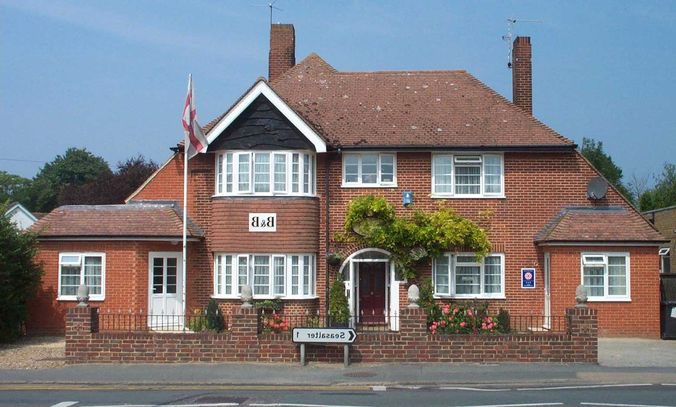
European version of the house
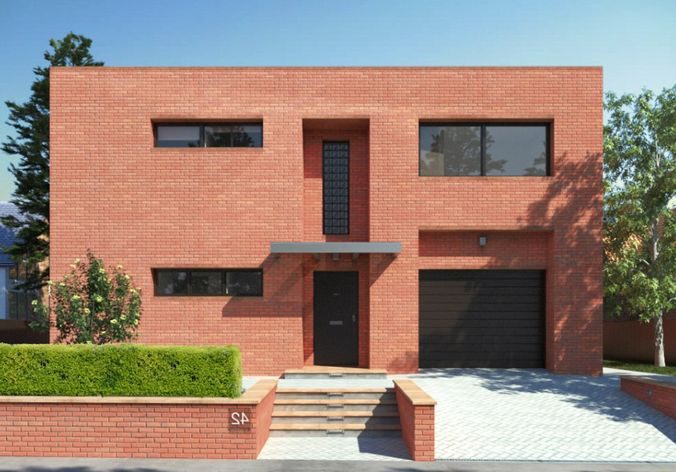
Brick house with minimalism style
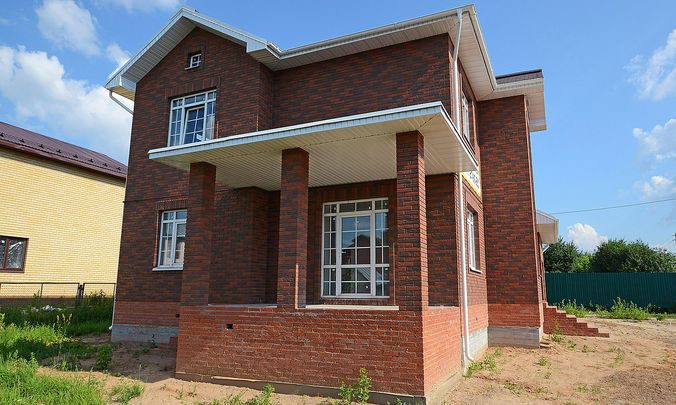
Unusual veranda
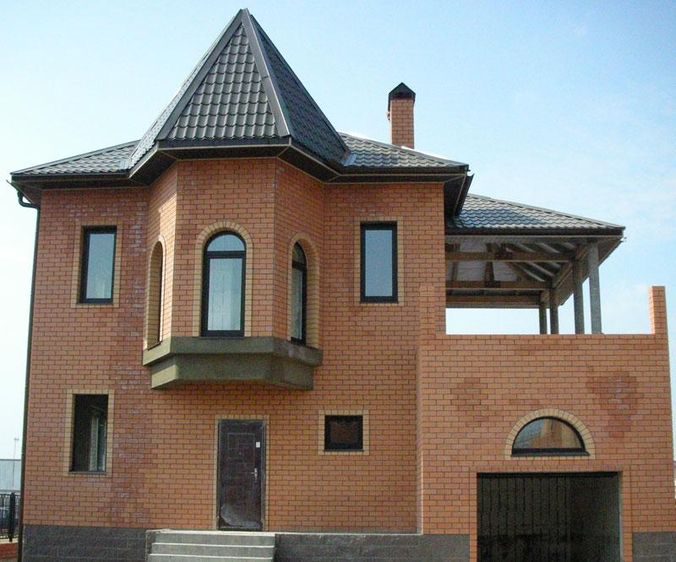
Imitation of the castle style
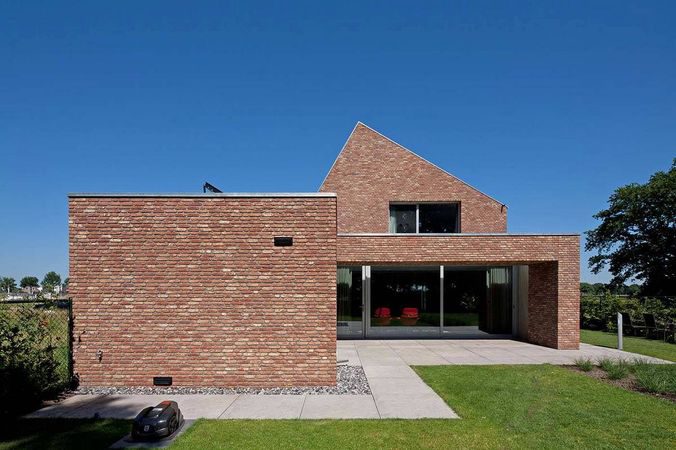
House in a modern style
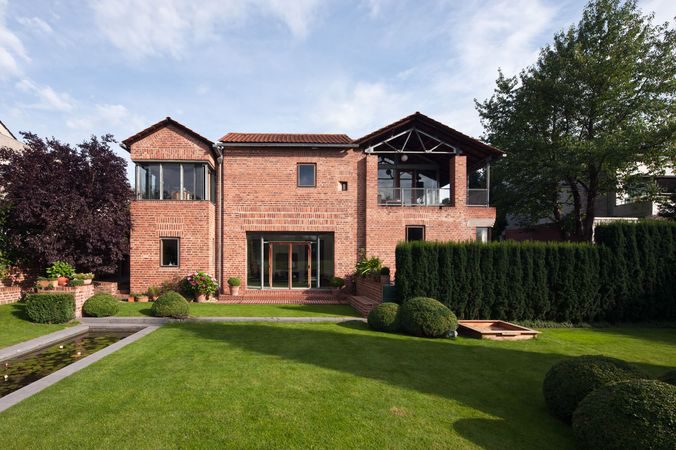
Modern European mansion
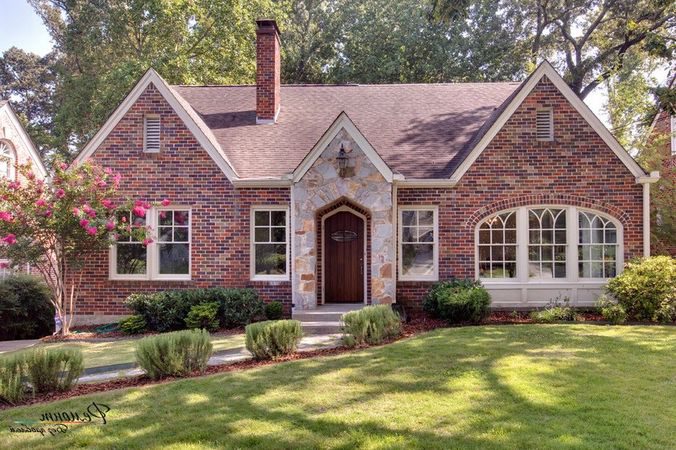
Such masonry will make the house fun
Brick density
There are certain reasons that affect the density of the product, regardless of its grade. There are several of them.
- Humidity. The brick collects the main volume of water only when laying the sample. Subsequently, this parameter may vary depending on the conditions, as well as the place of use of the material. If a stone cannot retain moisture in itself, it means that it allows air to pass through, and therefore a product that absorbs moisture is usually used to equip cellars, basements and sewers.
- Cracks. The natural properties of raw materials are cracking when dry, but with the use of polymer compositions today it is possible to achieve an improvement in the density of bricks.
- Clay grade. From the place of occurrence of raw materials with the same volume, it can have a different weight, which is reflected in the density.
- Red brick can differ in weight and size, it is a good building material, from which you can not only build structures, but also be used for a fireplace or for other purposes. The weight and dimensions of the product are selected in accordance with the place of use. The standard production and parameters of this material make it possible to initially determine the load on the foundation that it will provide, to simplify the method of transporting it to the facility.
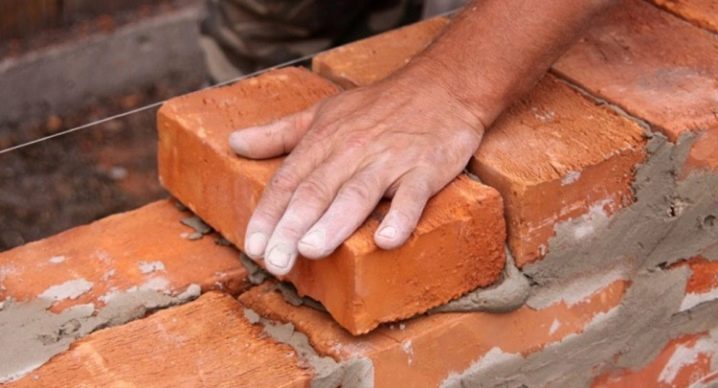
A little about history
The history of brick production dates back to about the 10th century, at a time when the Kiev state was being formed. The adoption of Christianity gave impetus to the widespread construction of churches and temples, which were built from bricks.
However, even after a century, this material was not used in large quantities and was not available to the ordinary population. This happened much later.
Initially, a brick was produced in a flat shape, resembling a slab. Over time, it became more thickened and looked like a parallelepiped. Simultaneously with the modification of the form, the brick handicraft business began to be supplanted by the industrial one.
Antique copy
By the 16th century, brick production was established and developed in many regions of the Russian State. The disadvantage was that each of the manufacturers could independently choose the dimensions of the products, which caused certain inconveniences in planning and construction.
That is why, at the beginning of the 17th century, the state standard for the size of bricks was first approved.
Image of mechanized production
By the second half of the 18th century, there were already 72 operating factories. But ordinary peasants also continued to live in wooden huts, which was caused, first of all, by the high cost of the material. And from the second half of the 19th century, government authorities began to encourage handicraft production.
Preserved building of the 19th century
Nowadays, the material in question is no less popular, available to many and is used almost everywhere. But technology has gone ahead noticeably.We will talk about modern manufacturing methods in this review.
Clay, sun and water are our best friends
After waiting for the onset of hot, dry weather, you need to start work on the production of raw bricks and adobe.
Prepared clay of the required condition is mixed with water in a vat and thoroughly kneaded with a hoe or wooden oar. In this age of space flight, it is better to use a construction mixer with a universal attachment.
The mixture must be thoroughly kneaded and allowed to stand for good water absorption by the clay. The finished substance should have the density of rustic sour cream. After proofing and ripening, for which 2-3 hours is enough, a filler is added to the mixture that increases the tensile strength of the product and thermal insulation qualities.
The filler can be:
- Chopped straw;
- Sawdust and wood shavings;
- Dry reed leaf;
- Stems of flax, hemp and other spinning crops;
- Ruminant manure.
The filler can be from 5 to 40 mass parts in the volume of the finished product.
To increase the water resistance, you can add 5-12% of building lime and 5% of M400 Portland cement to the mash mass.
As a plasticizer, you can use water glass, which is added to the finished mixture at the rate of 1 part of water glass to 20 parts of the molding mixture. This component improves the laying properties of the mash during molding and contributes to a more delicate removal of moisture from the brick mass during subsequent drying.
Forms and methods of molding
Forms for the manufacture of raw bricks and adobe can be single and typesetting, up to five cells. They are made from a wooden board or plywood of sufficient strength. Geometric dimensions can be standardized, as we talked about above, or arbitrary. Before filling the mold, it is necessary to dust it with sawdust, bran or ordinary dust to reduce the sticking of bricks in the mold.
A portion of the molding mixture is placed in the cell and carefully pressed from above with some kind of plane, while removing the excess with a spatula. If the surface of the site is strong and even, you can use through forms that have only side walls, if not, then equipped with a bottom.
Forming in the first case occurs by pulling the form off the molded brick by moving from bottom to top. In the second, turning over and shaking out from top to bottom. The products molded in this way in one cycle are kept on the molding site for 3 days. After that, they are placed on the edge and dried for 7 days. Further, after preliminary drying, the adobe gains its initial strength and is collected in the so-called cages - dense packing in which there is a small space for air circulation.
The final drying and ripening of adobe is highly dependent on weather conditions and can last from 30 to 90 days. Then a quality test is carried out. In free fall from a height of 2 meters, the brick must retain its shape and not collapse.
Characteristics and applications of ordinary ceramic bricks
Ordinary red brick has a wide range of applications. In construction, solid brick is most often used. It is from it that load-bearing and non-load-bearing walls and partitions, foundations, supports are erected. Since, after erection, an object made of this material is most often subjected to plastering, there are no special requirements for the appearance of products of this type.
The main characteristics of ordinary red brick:
- dimensions of a single building stone 288x138x65 mm;
- the size of one and a half - 250x120x88 mm;
- double dimensions - 250x120x138;
- thermal conductivity of solid brick 0.6-0.7 W / m ° С;
- the permissible volume of voids in solid brick is not more than 13%;
- the permissible volume of voids in a hollow brick is not more than 45%;
- the optimum density of solid stone is 1600 kg / cm³.
According to the degree of strength, all products of this type are subdivided into grades.This is the main characteristic, the numbers in which indicate the permissible load in kilograms per 1 cm². There are the following brands of red brick:
The advantages of ceramic bricks.
- M50;
- M75;
- M100;
- M125;
- M150;
- M175;
- M200;
- M250;
- M300.
If made by plastic molding, its flexural strength is 22 kg / cm². If the product is produced in a production using dry hyper pressing, then 16 kg / cm². According to GOST, the following deviations in the size of the stone are permissible: in width - 4 mm, in length - 5 mm.
Brick of the M100 brand is able to retain heat up to 1.8 W. This is an indicator of the rather high thermal conductivity of this material. Therefore, it is traditionally used for the masonry of external and load-bearing walls. The technical characteristics of the product include an indicator such as frost resistance. The lower it is, the cheaper the brick is. The following degrees of frost resistance are distinguished:
- F15;
- F25;
- F35;
- F50;
- F100.
In order to issue a conclusion on the degree of frost resistance of the product, the experts proceed as follows: for 7-8 hours it is immersed in water, after which it is placed in the freezer for the same period. The processes alternate until there are clear signs of material destruction. The degree of frost resistance is determined by the number of freeze-thaw cycles. The same brand of brick may have different indicators of this plan.
During the drying or firing process, blotches or areas of black color may appear in the body of clay building stone. This is not a deviation from the norm, as it does not in any way affect the quality of the product. GOST allows the presence of dark spots on the surface of not only ordinary, but also facing bricks.



